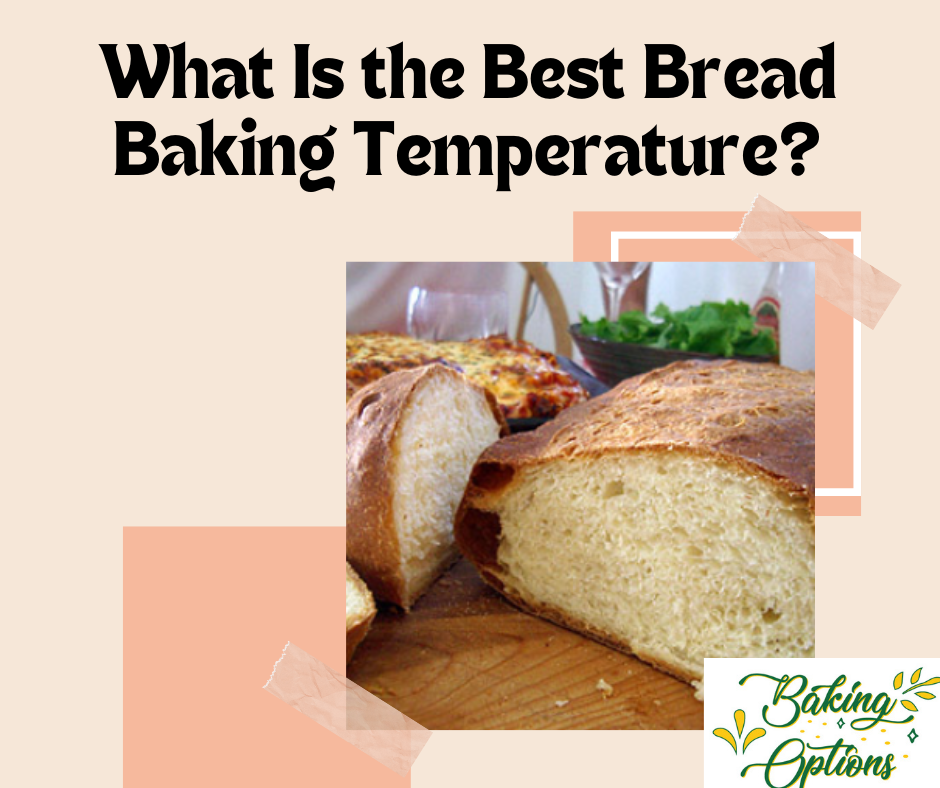We’re all ultimately searching for a perfectly cooked loaf of bread, right? When it comes to baking and preparing bread, temperature is crucial.
There are a lot of variables to take into account, ranging from the water’s temperature to the dough’s during the proofing phases. Include the oven’s temperature and, lastly, the product’s internal temperature. Everything counts when trying to make the perfect loaf of bread.
For the right rise, flour and yeast require the ideal conditions. So, even when every other aspect of the method is flawless, individuals who neglect to guarantee the proper baking temperatures for bread will never be able to judge the greatest outcomes.
I have a lot to share in this area because I have baked many different kinds of bread with success and have failed just as much to learn my lessons. Scroll down to see my findings!
Contents
The Temperature for Baking the Dough

Actually, depending on the kind of bread you are baking, different temperatures work best. For example, loaves of bread with lean dough bake at 190–210 degrees Fahrenheit, while bread with heavier dough bakes at 180–200 degrees F.
You can either put the dough into the oven right away to bake bread without preheating it, or you can preheat it for 15 minutes to 475 degrees Fahrenheit.
Make sure to generate steam when preheating the oven by setting a pan of water inside and allowing it to reach that temperature (475).
Before putting the dough on the rack to bake, pour two to three cups of water into the pan and preheat the oven. After 15 minutes, you can check to see whether it has browned, but bake it for 20 minutes.
Lower the oven temperature to 450 degrees Fahrenheit if the crust is overly golden. After the loaf is done baking, check its underside to see if it feels hollow and soft. If not, bake it for a further five minutes.
After the bread has baked, turn off the oven and leave it inside for five to ten minutes without opening the door if you want a soft, crunchy crust. When bread is baked correctly, it should be firm. If it isn’t, it may have been overdone. Conversely, very spongy breads are underdone and can benefit from an additional few minutes in the oven.
Bread Made with Fats
Bread that contains fat—butter, oil, or another substance—is referred to as “rich-dough” bread. Fat has multiple functions in baking. It covers the flour, preventing water and proteins from mixing and slowing down the production of gluten. Furthermore, bread created with fat lacks the lengthy gluten strands that are often present in bread made without fat.
Generally, a rich-dough bread is baked at a lower temperature than an ordinary yeast bread. But remember, to guarantee you get the finest results possible, like with any bread recipe, it’s important to follow the recommended oven temperature.
Bread Made with Sugars
Bread contains a variety of sugars, including white and brown sugar, honey, molasses, syrups, and others, which are used to provide sweetness and flavours through caramelisation. Moreover, sugar feeds the yeast during the fermentation process in a loaf of yeast bread.
When bread is baked, it usually bakes at 350°F (177°C) if more than ½ cup of sugar is used. If less sugar is used, it usually bakes at a higher temperature, like 375°F (191°C).
You can regulate the final colour and avoid overbrowning if you pre-heat your oven, bake at a slightly lower temperature of about 25°F (14°C). Or watch it closely during the last 5 to 10 minutes of baking.
Chart of Temp to Bake Bread
This chart showing typical oven temperatures for baking different types of bread:
| Type of Bread | Oven Temperature | Baking Time |
| White Sandwich Bread | 350°F (175°C) | 25-30 minutes |
| Whole Wheat Bread | 350°F (175°C) | 30-35 minutes |
| Sourdough Bread | 450°F (230°C) | 35-45 minutes |
| French Baguette | 450°F (230°C) | 20-30 minutes |
| Artisan/Crusty Bread | 450°F (230°C) | 25-35 minutes |
| Brioche | 375°F (190°C) | 25-30 minutes |
| Rye Bread | 375°F (190°C) | 35-45 minutes |
| Focaccia | 425°F (220°C) | 20-30 minutes |
| Quick Bread (e.g., Banana Bread) | 350°F (175°C) | 50-60 minutes |
How To Check When Bread Is Done

There are two popular techniques that work well. Tapping the bottom of the bread to see if it’s hollow, or looking at the colour. Since neither approach is superior than the other, you can utilise either one alone or in combination for the optimal result.
Tapping The Bottom
Turn your loaves upside down after taking them out of the oven (or skillet, if you’re making sandwich bread). Press your thumb a few times firmly on the bottom of the loaf. A well-done loaf should feel hollow to the touch.
I sympathise if you’re finding it difficult to adjust to this technique—I know I did in the past! However, towards the conclusion, I started to notice a gradual difference in the sound when I started tapping my bread every five minutes.
Observing The Colors
A nearly done loaf of bread should be firm and dry to the touch, with distinct shades of golden brown and a few darker specks scattered across the floured surfaces.
Naturally, the differences in shade also rely on the types of bread you have. You can search the Internet for pictures of the bread to use as a guide. Use most recipes as a general guide; good recipes, by the way. Also specify exactly how the dish should turn out.
If the crusts appear light-colored or not as described in the recipes, bake your bread for a few more minutes.
Read also: How Long To Cook Pizza
Endnote
We frequently use an automated baking setting that sets the oven temperature to 350°F (176.6°C) and then forgets about it. Knowing the subtle distinctions between different types of bread can make all the difference when baking. This is something we all want to turn out amazing.

